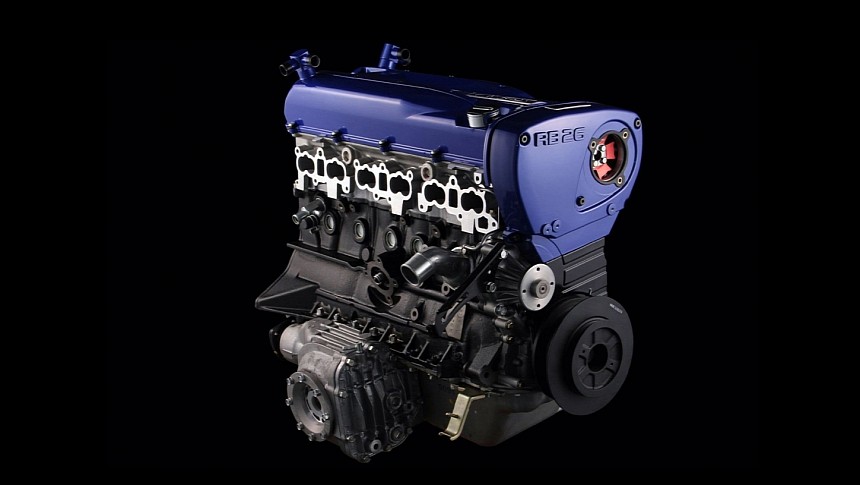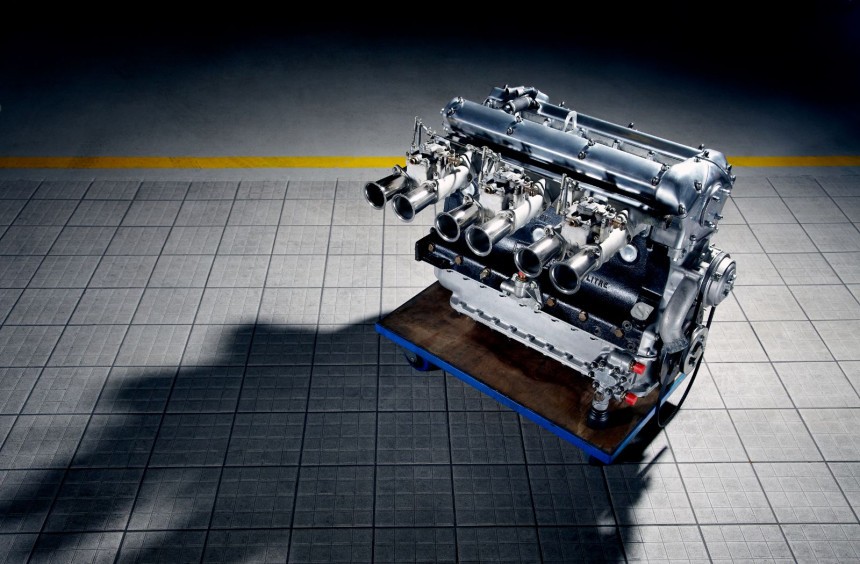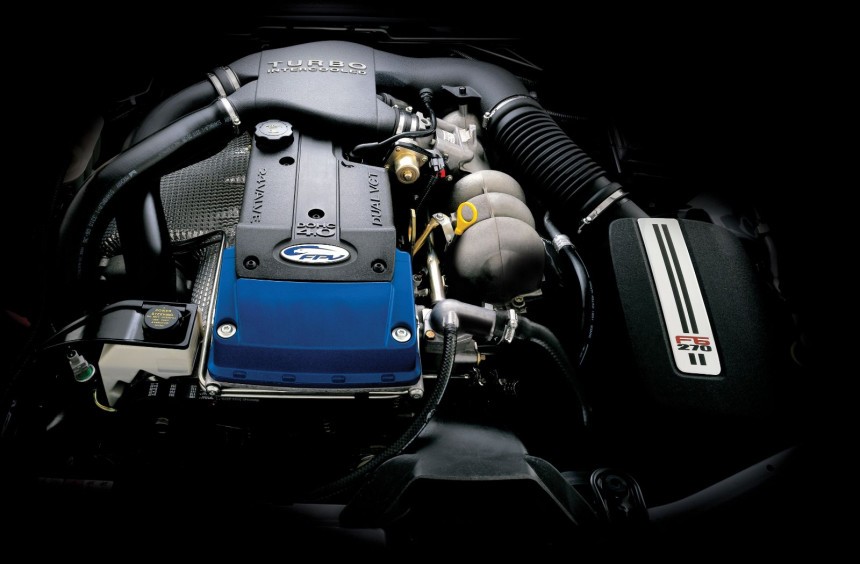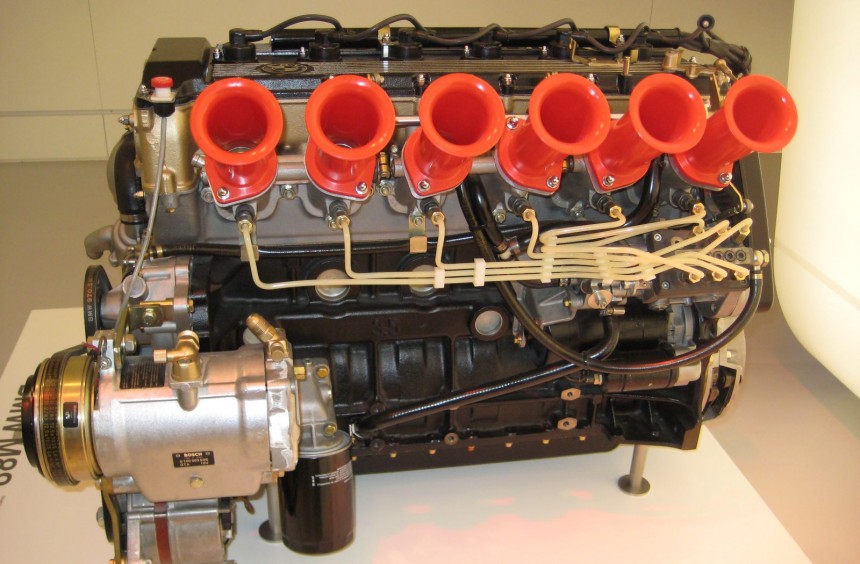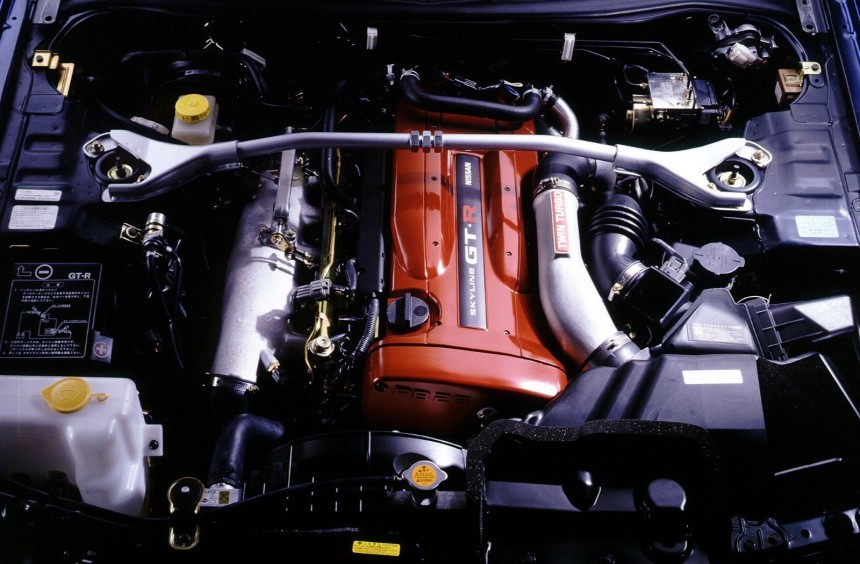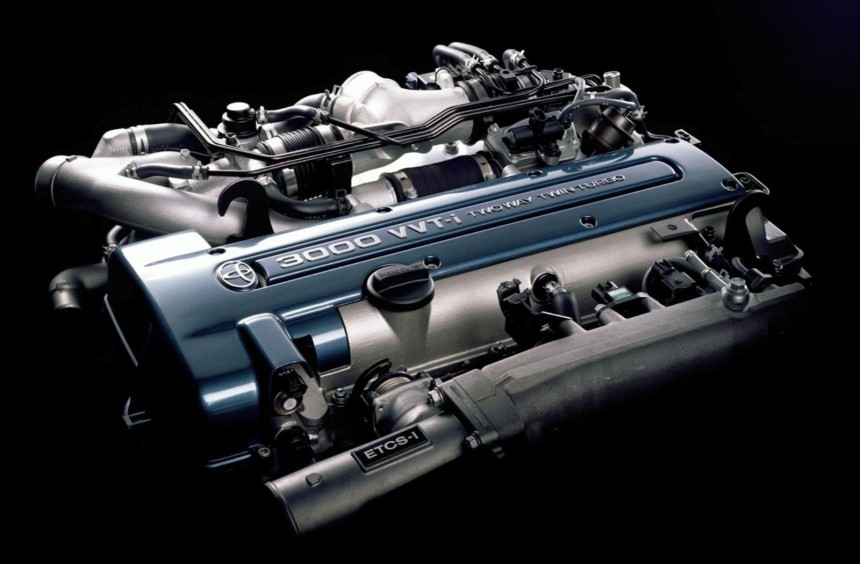In use for over a century, this fantastic engine configuration has given birth to some of the mightiest powerplants ever created.
The first straight-six was produced in the Netherlands all the way back in 1903. It was used by the Spyker 60 HP race car, and, as the name suggests, it made 60 ponies.
In the decades that followed, the straight-six became one of the most popular engine configurations, mainly because of its near-perfect balance, which resulted in smoother operation.
However, in recent times, most carmakers that continued to produce six-cylinder engines have switched to the V6 configuration since it provides a more compact package.
Though critically endangered today, the straight-six configuration has given birth to some legendary powerplants like the five we're about to rediscover in this article.
One of the longest-serving straight-six engines in history, the Jaguar XK6 was produced in England from 1949 to 1992.
Based on a cast-iron block with a lightweight DOHC aluminum cylinder head sitting on top, it was built in five displacement versions (ranging from 2.4 to 4.2 liters) for Jaguar's passenger cars.
In these forms, it produced between 112 and 265 hp, but race-bred variants capable of much more power were also used for Jaguar's motorsport programs.
Over its lifespan, the XK6 was praised for its smooth power delivery, lightweight packaging, and reliability.
The most famous series-production Jaguars to use this engine were the XK120 and E-Type.
Arguably Ford's most underrated engine, the Barra inline-six was designed by the Blue Oval's Australian branch.
It was produced between 2002 and 2016, powering multiple versions of the Aussie Falcon and Territory models.
Its architecture consists of a chunky cast-iron block and an aluminum DOHC head with four valves per cylinder and variable valve timing.
The engine was available in either naturally-aspirated or turbocharged forms, and while most variations were gas (petrol)-powered, two were designed to run exclusively on liquefied petroleum gas (LPG).
Output for the NA naturally-aspirated petrol versions ranged from 244 to 261 hp, while the turbocharged Barras could make between 322 and 436 hp.
This amazing powerplant reached legendary status thanks to its bombproof reliability and virtually limitless tuning potential, which earned it the nickname "Aussie 2JZ."
BMW has been the only carmaker to produce inline-sixes from the 1930s until the present day, and most of its six-pots are iconic.
Therefore, it's tough to say which one is the best, but in my opinion, the M88 deserves this title for its significance to the brand.
Built from 1978 to 1989, it was the first series-production engine developed by BMW M for the first-ever M-badged model. Moreover, it was the first unit to be mounted midship in a BMW production model: the legendary M1.
Like the previous entries on our list, the M88 featured a cast iron block with a DOHC aluminum cylinder head.
It displaced 3.5 liters, pushed out 273 hp in the street-legal M1, and went down as one of the best-sounding six-cylinders ever built.
While the power output was somewhat anemic in the production version, BMW M engineers showcased its true potential in the Group 5 M1, where it could make up to 1,000 hp thanks to various improvements, including a turbocharger.
Apart from the M1, the M88 was also used in the E12 M535i, the E24 M635CSi, and the South African version of the E23 735i.
Though some of you might have issues with the inclusion of the first three entries in a list of five best straight-sixes, I'm sure we can all agree that the RB26DETT deserves its place.
Built from 1989 to 2002, Nissan's greatest production engine was found under the hoods of the iconic R32, R33, and R34 Nissan Skyline GT-Rs.
With a displacement of 2.6 liters, the legendary engine featured a sturdy cast-iron block and a 24-valve DOHC aluminum cylinder head.
Fitted with a pair of turbochargers, it made between 276 and 316 hp, depending on the model year.
Apart from establishing itself for delivering smooth power and reliability, the RB26DETT also became a legend thanks to the tuning community, which managed to extract huge horsepower figures from its stock architecture.
Arguably the greatest mass-produced straight-six of all time, the 3.0-liter 2JZ was built by Toyota from 1991 to 2007.
It powered many Toyota and Lexus models, but it reached automotive stardom in the engine bay of the A80 Supra.
Though it wasn't revolutionary in terms of technological advancements, this engine received a heavily-reinforced cast iron block and an equally sturdy aluminum head.
It was available in either naturally-aspirated or twin-turbocharged forms, with or without variable valve timing.
Depending on the version and model year, it made between 217 and 325 hp.
Thanks to its sturdy construction, the 2JZ became one of the most reliable six-cylinder engines ever built. Moreover, the over-engineered architecture made it easy to extract vast amounts of power with simple, bolt-on tuning and an ECU remap.
In the decades that followed, the straight-six became one of the most popular engine configurations, mainly because of its near-perfect balance, which resulted in smoother operation.
However, in recent times, most carmakers that continued to produce six-cylinder engines have switched to the V6 configuration since it provides a more compact package.
Though critically endangered today, the straight-six configuration has given birth to some legendary powerplants like the five we're about to rediscover in this article.
Jaguar XK6
Based on a cast-iron block with a lightweight DOHC aluminum cylinder head sitting on top, it was built in five displacement versions (ranging from 2.4 to 4.2 liters) for Jaguar's passenger cars.
In these forms, it produced between 112 and 265 hp, but race-bred variants capable of much more power were also used for Jaguar's motorsport programs.
Over its lifespan, the XK6 was praised for its smooth power delivery, lightweight packaging, and reliability.
The most famous series-production Jaguars to use this engine were the XK120 and E-Type.
Ford Barra I6
It was produced between 2002 and 2016, powering multiple versions of the Aussie Falcon and Territory models.
Its architecture consists of a chunky cast-iron block and an aluminum DOHC head with four valves per cylinder and variable valve timing.
The engine was available in either naturally-aspirated or turbocharged forms, and while most variations were gas (petrol)-powered, two were designed to run exclusively on liquefied petroleum gas (LPG).
Output for the NA naturally-aspirated petrol versions ranged from 244 to 261 hp, while the turbocharged Barras could make between 322 and 436 hp.
This amazing powerplant reached legendary status thanks to its bombproof reliability and virtually limitless tuning potential, which earned it the nickname "Aussie 2JZ."
BMW M88
Therefore, it's tough to say which one is the best, but in my opinion, the M88 deserves this title for its significance to the brand.
Built from 1978 to 1989, it was the first series-production engine developed by BMW M for the first-ever M-badged model. Moreover, it was the first unit to be mounted midship in a BMW production model: the legendary M1.
Like the previous entries on our list, the M88 featured a cast iron block with a DOHC aluminum cylinder head.
It displaced 3.5 liters, pushed out 273 hp in the street-legal M1, and went down as one of the best-sounding six-cylinders ever built.
While the power output was somewhat anemic in the production version, BMW M engineers showcased its true potential in the Group 5 M1, where it could make up to 1,000 hp thanks to various improvements, including a turbocharger.
Apart from the M1, the M88 was also used in the E12 M535i, the E24 M635CSi, and the South African version of the E23 735i.
Nissan RB26DETT
Built from 1989 to 2002, Nissan's greatest production engine was found under the hoods of the iconic R32, R33, and R34 Nissan Skyline GT-Rs.
With a displacement of 2.6 liters, the legendary engine featured a sturdy cast-iron block and a 24-valve DOHC aluminum cylinder head.
Fitted with a pair of turbochargers, it made between 276 and 316 hp, depending on the model year.
Apart from establishing itself for delivering smooth power and reliability, the RB26DETT also became a legend thanks to the tuning community, which managed to extract huge horsepower figures from its stock architecture.
Toyota 2JZ
It powered many Toyota and Lexus models, but it reached automotive stardom in the engine bay of the A80 Supra.
Though it wasn't revolutionary in terms of technological advancements, this engine received a heavily-reinforced cast iron block and an equally sturdy aluminum head.
It was available in either naturally-aspirated or twin-turbocharged forms, with or without variable valve timing.
Depending on the version and model year, it made between 217 and 325 hp.
Thanks to its sturdy construction, the 2JZ became one of the most reliable six-cylinder engines ever built. Moreover, the over-engineered architecture made it easy to extract vast amounts of power with simple, bolt-on tuning and an ECU remap.
